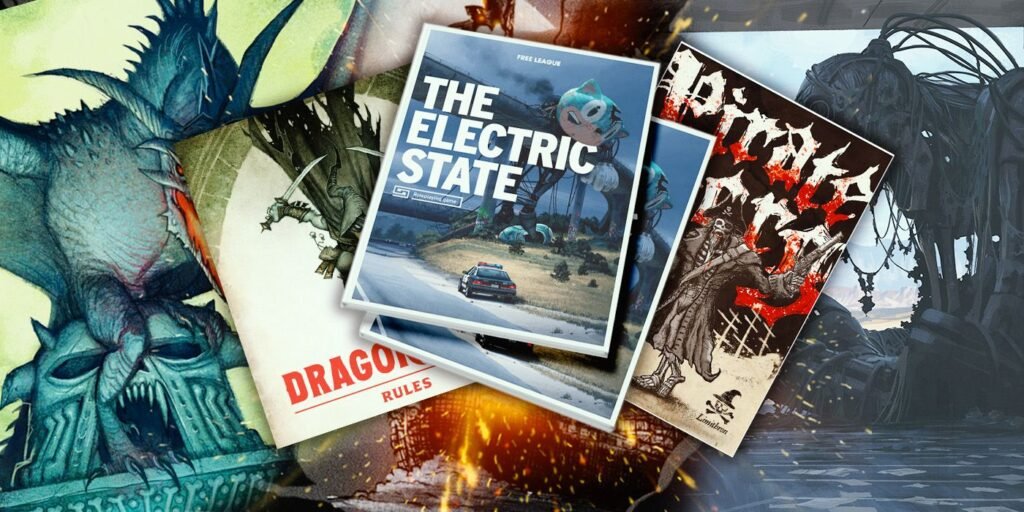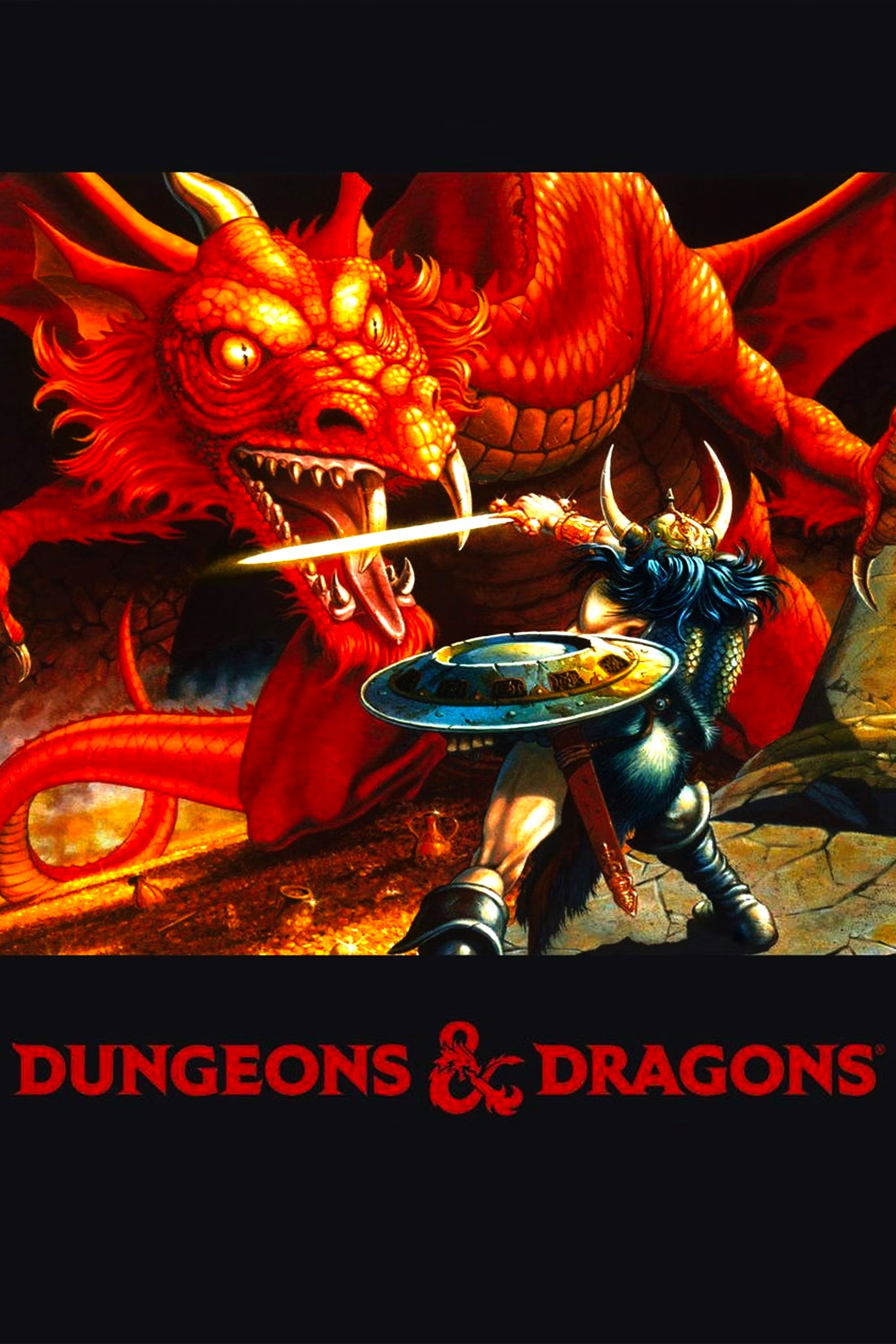
Dungeons & Dragons is easily the most recognizable tabletop role-playing game (TTRPG), but it is far from the only one. In fact, the more time I spend playing TTRPGs, the more I find myself gravitating towards ones with distinct styles or genres. This isn’t because D&D is bad, but it isn’t necessarily the best engine for all types of games or stories. If you’re looking to mix up your TTRPG experiences, I would strongly recommend checking out a new game for a change of pace.
TTRPGs that aren’t D&D often shine when tackling different genres. That isn’t to say other fantasy games like Pathfinder aren’t also worth playing, but D&D does a pretty solid job covering your bases for any high-fantasy adventures you want to embark on. There are also D&D Fifth Edition (5E) supplements for other settings like Middle-earth if you want to mix up the types of creatures and classes available. That’s why, when looking for other TTRPG options, I tend to explore those that are very different from D&D, either based on their playstyle or their setting and genre.
5
PIRATE BORG Is A High-Seas Meat Grinder With A Unique Setting
PIRATE BORG Will Test Your Mettle In The Best Way
If you are a fan of fantastical high-seas adventures, then I would strongly recommend giving PIRATE BORG a try. The game takes place in an alternate history version of the Golden Age of Piracy in the much more grim and dangerous Dark Caribbean. The game can be run as a standalone RPG, but its rules are also compatible with the MÖRK BORG RPG system if you want to combine the two.
One of PIRATE BORG‘s most attractive elements is how easy it is to hop into your first game. I was impressed by how streamlined the rules were for combat, character creation, and naval battles. The first time I ran a PIRATE BORG game, there was no need for a lengthy session zero. Instead, I was able to quickly explain the rules and my group started playing in less than an hour. It helps that character creation is largely determined by dice rolls instead of chance, making the process go quickly and smoothly.
It’s a good thing that PIRATE BORG makes character creation so simple, because the game can also be a bit of a meat grinder. Death is a lot easier to accept when you don’t spend too much time crafting the perfect character. The game’s rulebook also includes a “Re-Crew-Tor” page designed for quickly crafting new player characters, so if a party member dies, that player can quickly hop back into the action.
I also have a big soft spot for how weird things can get in PIRATE BORG. For example, you can play as several types of sentient animal, including my personal favorite, a parrot. The game also has a very well-designed intro adventure, Buried in the Bahamas, which includes fun elements like treasure maps for the party to decipher by looking at larger maps of the area. PIRATE BORG does a good job including what you’d like from a pirate adventure, while also presenting a fresh and unique world to explore.
4
Starfinder’s Second Edition Can Create Sci-Fi Epics
Starfinder Is Complex But Worth The Effort
Starfinder is Paizo’s sci-fi equivalent to its fantasy TTRPG, Pathfinder. In terms of complexity, Starfinder is kind of the opposite case of PIRATE BORG, but it’s also a game that is very much worth the time investment of learning. Starfinder offers a variety of interesting ways to build characters, and your own unique starships that your party can pilot. It’s worth noting that Starfinder falls closer to science fantasy, like Star Wars, so this might not be the best choice if you’re looking for hard sci-fi.
For the past year, Starfinder‘s second edition has been undergoing playtesting, with the new rules officially coming out later this year. If you’re looking to get into the game, this might be a good time, since you’ll be able to start fresh with the new rules. The new edition runs largely off the same rule system as Pathfinder‘s second edition (2E), meaning learning this game will also let you learn another solid D&D alternative. There is also a handy semi-automated character builder availble from Demiplane, which can help make character creation a bit less intimidating.
Although the full rules aren’t out yet, I’ve been pretty happy with how well Pathfinder 2E‘s rules map onto the playtest rules for Starfinder 2E. If the original edition of Starfinder is any indication, we will be in for some fun (if somewhat complicated) rules regarding space battles, which do a good job giving all crew members a meaningful role to play. Although you may find your first few play sessions feel a bit slow as everyone adjusts to the rules, once you’re in full swing, Starfinder is a great engine for telling exciting sci-fi stories.
3
The Electric State Is Hauntingly Beautiful
The Electric State Is One Of The Most Atmospheric TTRPGs I’ve Played
The Electric State is a role-playing game for those who love the blend of despair, horror, and strange beauty evoked by games like Elden Ring or Nier: Automata. The game is based on Simon Stålenhag’s narrative artbook of the same name, which depicts an alternate reality version of 1997 America which has been torn apart by a civil war involving massive mechanical weapons. Residents are also addicted to a VR device to the point that some even let their physical bodies rot away while using it.
Games in The Electric State take the form of a journey, which the book emphasizes should focus more on what happens along the way than the actual destination. Game masters (GMs) plan out stops and encounters that happen along the way to the destination. The game uses Free League’s flexible Year Zero Engine, so if you’ve played the ALIEN or Blade Runner RPGs you’ll already have some idea of how The Electric State‘s gameplay works.
The melancholic world of The Electric State isn’t just set dressing, but built into the game. You’ll need to manage your character’s bliss and hope so as not to risk losing hope in your journey. By blending the themes into the mechanics of the game, The Electric State ensures that its oppressive tone is ever present in the minds of players.
Although any RPG group can likely get a lot out of The Electric State, I might recommend running this game with the expectation of trying to tell a slightly more serious story. Similar to other TTRPGs that have a heavy atmosphere, like Bleak Spirit, The Electric State loses some of its best qualities if you’re playing in a setting where players are more interested in getting laughs. That’s not to criticize that style of play. Many of my D&D games devolve into me and my friends goofing off in character, but it would detract from this game’s tone.
2
The Zone Is Easy To Learn And Doesn’t Need A DM
The Zone Runs The Game Using Cards, Allowing Everyone To Be A Player
I was initially drawn to The Zone because it aesthetically and thematically reminded me of Annihilation by Jeff VanderMeer, a personal favorite sci-fi novel. I definitely wasn’t disappointed in how well the game captures the same feeling of entering a mysterious zone, populated by strange phenomena, in hopes of achieving a goal that seems somewhat impossible. That said, what really sold me on the game is how it works mechanically.
The Zone is a TTRPG that mostly runs itself. As one of my RPG group’s forever-DM, I jumped at a chance to try out a game that would allow us all to interact as characters in the narrative. The Zone is also very easy to set up, and makes character creation a streamlined process, since you simply pick cards for both. Once you’ve created your characters and set up your journey, you progress through each story beat on your way to the center of the titular zone.
A quick disclaimer: The Zone is not a TTRPG for players who want to feel powerful, nor is it one where you can guarantee everyone’s survival. In fact, as the game is set up, only one character will make it to the center of the zone at the end of the game. This does not detract from the experience; if anything, it enhances the sense of danger you feel when entering The Zone. Still, it’s good to understand what type of game this is for anyone who is used to D&D‘s power fantasy aspects.
1
Dragonbane Streamlines D&D’s Combat
Dragonbane Is A Good Alternative If You Still Want A Fantasy Game
For the most part, I’ve strayed away from recommending other fantasy TTRPGs, largely because D&D does still do a great job for that genre. However, I would be remiss if I didn’t mention Dragonbane as a solid alternative to D&D if you want to stay within the fantasy genre, but explore a different game engine. Dragonbane is an updated and translated version of the 1982 TTRPG Drakar och Demoner which was very popular in Scandanavia when it was released.
One reason it’s worth giving Dragonbane a try is that its combat moves much more quickly than D&D. Having played D&D for around 10 years at this point, I often find myself checking out during long combat encounters. I pretty much know what I’m going to do each turn, as I have a strong understanding of how each class works, and I’ve encountered a lot of the monsters from the game’s bestiary. Therefore, I really appreciate how quick and chaotic combat can feel in Dragonbane.
Whether it’s one of these TTRPGs or something else (Cyberpunk Red is another great option), I strongly recommend taking the chance to branch out from Dungeons & Dragons. I’m still a massive D&D fan, but other TTRPGs are just much better suited to certain types of stories and genres. It’s also nice to mix things up from time to time, especially if your TTRPG group is in a slump. A fun new system can be the shot in the arm your group needs to recapture the magic of your earlier sessions.
Source: Demiplane

- Original Release Date
-
1974
- Publisher
-
TSR Inc., Wizards of the Coast
- Designer
-
E. Gary Gygax, Dave Arneson
- Player Count
-
2-7 Players
